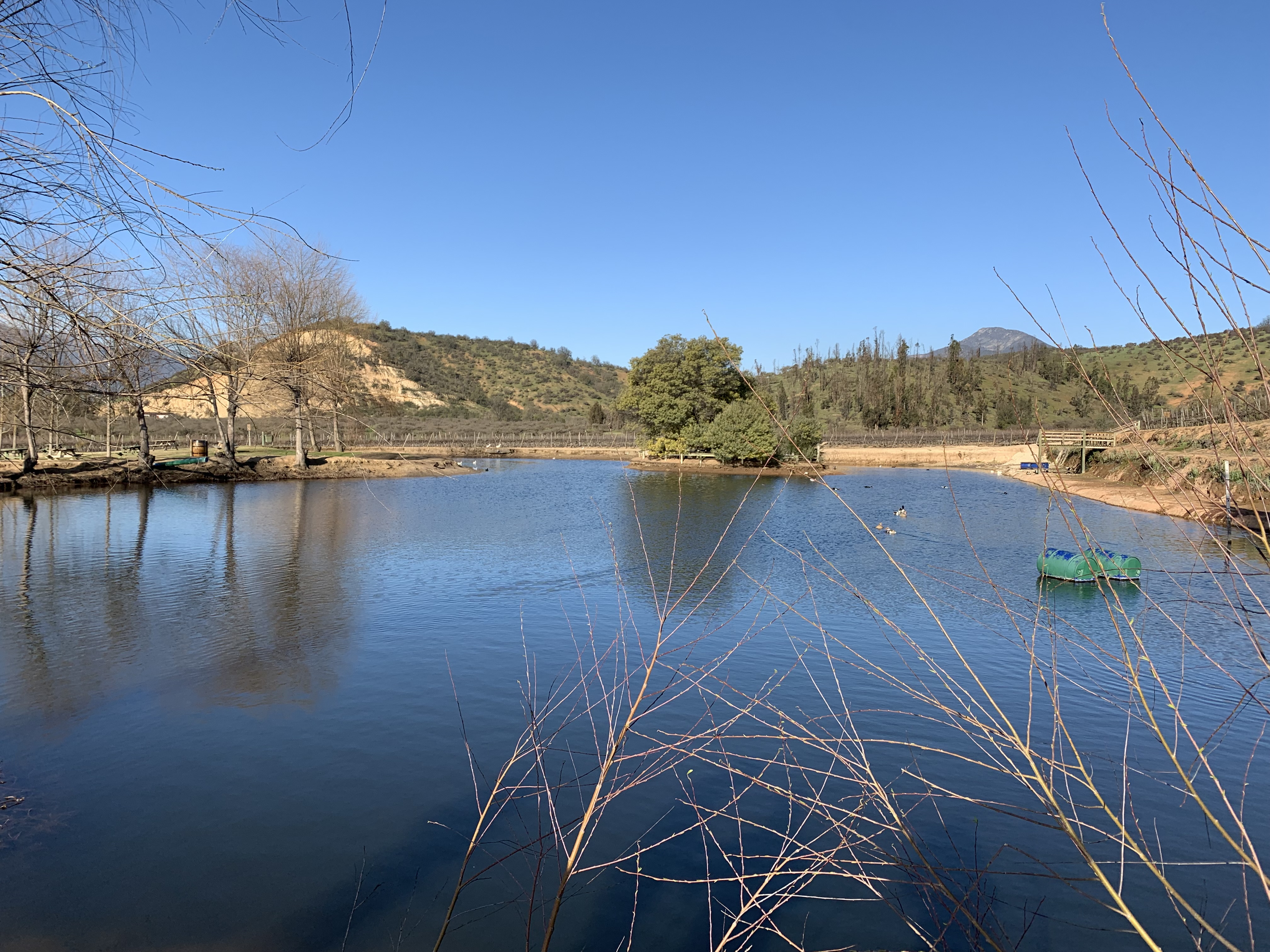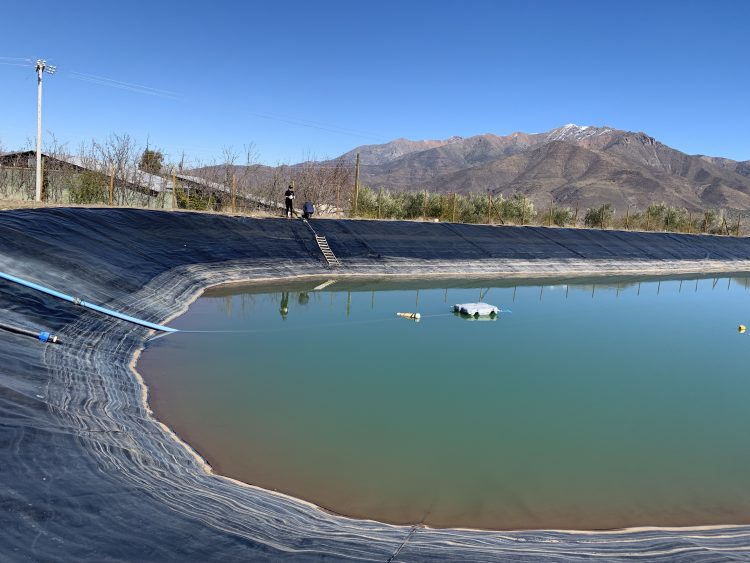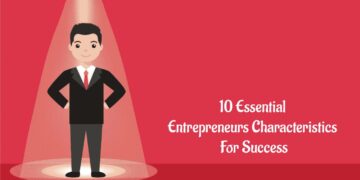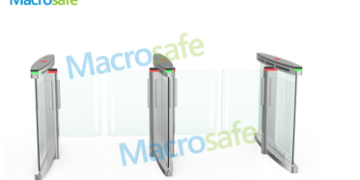Leaning over the edge of a reservoir the size of two football fields, a farm technician swings an upturned gallon bottle wildly from side to side, tipping out its clear contents. “Do you like my technique?” he says with a laugh. An oily layer spreads out over the water. It calms the ripples and dulls the glimmer of Chile’s winter sunlight on its surface. For a few minutes, there’s an intense smell of acetone, like someone has spilled a giant bottle of nail polish remover.
At this blueberry farm an hour’s drive from Santiago, Hortifrut, one of the largest berry producers in South America, is trialing one solution to Chile’s unprecedented 13 year-drought. For the month of August, the liquid from the bottle, a mix of polymers and alcohol, sits on top of the water, never mixing with it. According to the manufacturer, Chilean startup O2 Company, this protective layer will cut the rate of evaporation by 50-80%, saving hundreds of thousands of gallons of water a month.
That’s a huge benefit in Chile. Drier, hotter conditions have drained lakes and left more than half the country’s 19 million people facing severe water scarcity. Less and less water flows from irrigation canals into Hortifrut’s reservoir, and the level now sits around 10 feet lower than normal. “We made this reservoir thinking it would provide us with a month of [water supplies],” says Denise Donnay, Hortifrut’s head of research and development. “But recently, it lasts a lot less.”
The water level at Hortifrut’s blueberry farm reservoir sits far below its usual level in August.
Ciara Nugent
Chile’s climate is transforming. The World Resources Institute projects that the country will face one of the world’s biggest increases in water stress by 2040. And with more than 80% of its water consumed by agriculture, industry, and mining, Chilean businesses are under immense pressure to find ways to boost supplies. They’re taking some big swings: mining companies in the north are resorting to energy-intensive factories to desalinate sea water in the desert. One startup is building artificial glaciers to trap surface runoff in the Andes mountains. Another is trapping moisture from the air to create new drinking water.
Carlos Korner, O2 Company’s founder, says his solution is “a little more homemade.” A former publicist, he reached out to a chemist in 2018 to help him develop a product that could help combat Chile’s water scarcity. “To me evaporation seemed like the obvious place to start,” he says. A study published this year in Nature and which looked at 1.42 million bodies of water larger than 24 acres around the world, found that the rate of evaporation for reservoirs has increased by 5.4% each decade since 1986. Collectively the reservoirs studied now lose 235 trillion metric tons of water a year—equivalent to 6% of all the fresh water withdrawn by humans each year for use in agriculture, industry, homes, and energy.
The rate of evaporation varies greatly depending on weather conditions around a body of water, and it’s hard for reservoir owners to measure how much they lose to evaporation, because doing so can require stopping withdrawals for weeks. O2 Company did its own experiment for one year in Chile’s central zone on an outdoor 2.5 acre reservoir. During the summer, it lost up to 0.8 inches of water off the top each month—about 6,000 metric tons. In Chile, that amount of water for irrigation can cost anywhere from $600 to $5,300, depending on which region of the country you’re in and what your source is, says Constanza Barros, an agronomist who serves as O2 Company’s head of strategy. (For mining companies using desalinated water, it could be tens of thousands of dollars). “The problem is that farmers don’t know how big their problem is,” says Barros. “So then they don’t know they need the solution.”
O2’s product went on sale in 2021, after three years of lab and one year of field testing to confirm that it does not mix with water—and therefore doesn’t impact the crops it irrigates—and does not affect local wildlife. The firm currently has 25 clients in Chile, mostly farms, vineyards, and mining companies.

The reservoir at the Indómita vineyard, west of Santiago.
Ciara Nugent
There are a handful of other solutions out there to reduce evaporation, including large-scale physical barriers. One of the most well-established are shade balls—small plastic balls which float on top of a body of water to reduce evaporation and prevent treatment chemicals from reacting with sunlight. In 2015, the Los Angeles Reservoir deployed 96 million shade balls during a drought. But a 2018 study of that deployment suggests that manufacturing shade balls may actually use up more water than they save. Health officials are also increasingly concerned about the microplastics released by plastics that come into contact with water used for agriculture or drinking.
The proliferation of solar panels around the world could also be an opportunity to slow evaporation: In 2014, India started putting solar farms on top of irrigation canals, saving land while shielding the water beneath. California’s Department of Water Resources is currently building out its first solar canal pilot. Incidentally, Hortifrut installed a 16,000 square foot floating solar farm, covering about a sixth of the reservoir, in 2020—the first such project in Chile.
Korner says O2 Company offers a solution for businesses that can’t afford more elaborate infrastructure, or who only want to cover their reservoirs during the hotter, high-evaporation periods. It costs $1,500 a month to cover 2.5 acres of water with O2’s product, and doesn’t require technical expertise to apply it. (The product evaporates over the course of a month and then needs to be reapplied.) Shade balls cost roughly $150,000 for the same area, and can last up to ten years—though in practice, as in the Los Angeles case, they are often deployed for only a fraction of that time.
Eduardo Gajardo, technical manager of the Indómita winery, 40 miles west of Santiago, has been a client of O2 since December 2021. Gajardo says the water saved by using the product is extremely valuable. Over the course of one year it has allowed the company to irrigate 10-12 extra acres of its vineyards, producing up to 130,000 extra pounds of grapes—such as sauvignon blanc, chardonnay, or pinot noir—worth around $50,000. “Also, if we have any problems with the water supply here, if the groundwater runs out, the product will protect us for a few extra weeks.”
Korner is hopeful that clients in other drought-stricken regions will feel the same way, planning sales trips to the western U.S., Spain, and Saudi Arabia over the next year. “In the short term, we want to be wherever populations and industries are threatened by the water crisis.” That category, unfortunately, shows no sign of shrinking.
More Election Coverage From TIME
Source by time.com






























